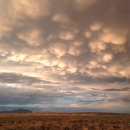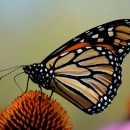Assessing the future sagebrush sagebrush
The western United States’ sagebrush country encompasses over 175 million acres of public and private lands. The sagebrush landscape provides many benefits to our rural economies and communities, and it serves as crucial habitat for a diversity of wildlife, including the iconic greater sage-grouse and over 350 other species.
Learn more about sagebrush core habitats: impacts of climate & climate uncertainty, wildfire and invasive species invasive species
An invasive species is any plant or animal that has spread or been introduced into a new area where they are, or could, cause harm to the environment, economy, or human, animal, or plant health. Their unwelcome presence can destroy ecosystems and cost millions of dollars.
Learn more about invasive species
Funding Year | Amount | Location |
FY22 | $ 110,000 | Rangewide |
FY23 | $ 113,548 | Rangewide |
FY24 | $ 312,817 | Oregon and Rangewide |
Project Description
Climate change may substantially alter big sagebrush plant communities, including potential ecological transformations to novel or less productive plan communities within the current sagebrush biome. This project is using an ecological simulation model to quantify future changes in abundance of big sagebrush perennial grasses, and cheatgrass. Results will be integrated into the Sagebrush Conservation Design algorithm to determine where core habitats may be gained or lost under various scenarios in the future.
Partners
U.S. Geological Survey, Marshall University, Yale University, Western Association for Fish and Wildlife Agencies (WAFWA), USGS Southwest Biological Science Center



